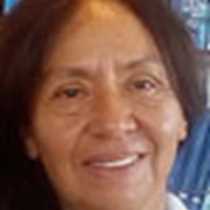We woke up hoping to see whales in the Bolivar Chanel that divides Isabela Island from Fernandina. These young islands are located in the western region of Galapagos, where Isabela is the largest island with six active volcanoes. Fernandina the youngest island of Galapagos and has one of the most active shield volcanoes from the islands called “La Cumbre”. This is one of my favorite areas of the Galapagos because of its unique wildlife, which has never been threatened by introduced predators. It has its own marine iguanas species, found nowhere else in the archipelago, as well as the flightless cormorant.
We were very fortunate, spotting some blue whales early in the morning at around 6:30! These creatures are difficult to see in the Galapagos Islands—throughout the time I have been working in the region, this is only my second sighting! Whale watching has a fascinating effect on us, these mammals transmit a flow of positive energy to us and it remains in our memories forever. We were also lucky to spot more blue whales again after lunch.
After watching these majestic creatures, we had to move on to the next adventures of the day. The National Geographic Endeavour II crossed the Simon Bolivar Channel once more in order to visit Vicente Roca Point, the most prominent northern point of Isabela, the large seahorse-shaped island. Our guests had the opportunity to go snorkeling, and though the temperature of the water was cool, they enjoyed seeing several green Pacific sea turtles, some of them sleeping along the ocean floor.
Later we moved north once more in order to cross the equator line, which we celebrated with wine and a surprise visit from some friendly pirates! This was an excellent day, and sharing it with our guests was a true pleasure.







